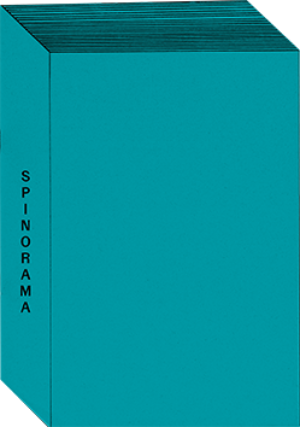Friday, 8:00am
26 July 2024
They showed backbone
Spinorama. An Exhibition of Interesting Spines
Curated by Aslak Gurholt & Fraser Muggeridge. London Centre for Book Arts, London.Spinorama is an exhibition of book spines in East London. Simon Esterson takes a sideways look
Spines thick and thin that read up, down, across or simply not at all on display at ‘Spinorama’ at the London Centre for Book Arts.
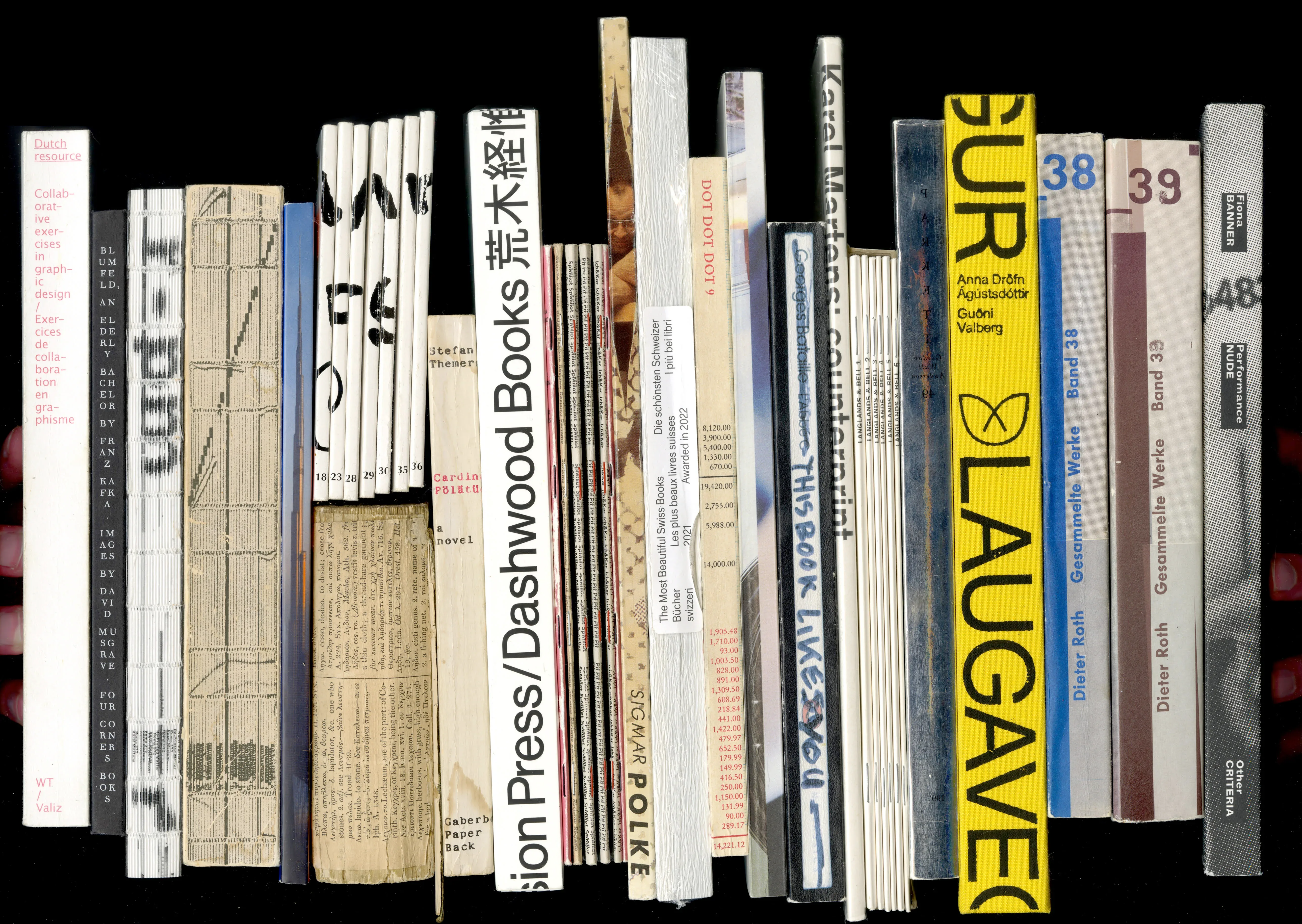
Designers Fraser Muggeridge and Aslak Gurholt (Yokoland) had a great idea, writes Simon Esterson. Why not have an exhibition about book spines? Designers and design writers focus on book covers all the time, but the spines? We don’t really talk about them, and rarely show them in design books. You may not judge a book by its spine, but that’s certainly how you find it. The spine is what you see on the bookshelf (if you’re organised) or in the tottering pile on the floor (if you are like me).
For most of a book’s life the spine is the only part of the book that’s visible, sitting there waiting for your attention. The exhibition Muggeridge and Gurholt have curated, ‘Spinorama’, which includes more than 80 examples, is at the London Centre for Books Arts in Hackney until Saturday 17 August. I have been looking along bookshelves and thinking about the under-appreciated role of spine design ever since. The curators point out master typographer Jan Tschichold’s stern warnings about spine design in 1946: ‘No lettering on the spine at all. Inexcusable for books more than 3mm thick … The author’s name must not be missing. It often determines the position of a book on the shelf.’
The three-volume Dikke Van Dale dictionary, designed by Joost Grootens, leads the march of the thick-spined books. Photo: Ira Yonemura
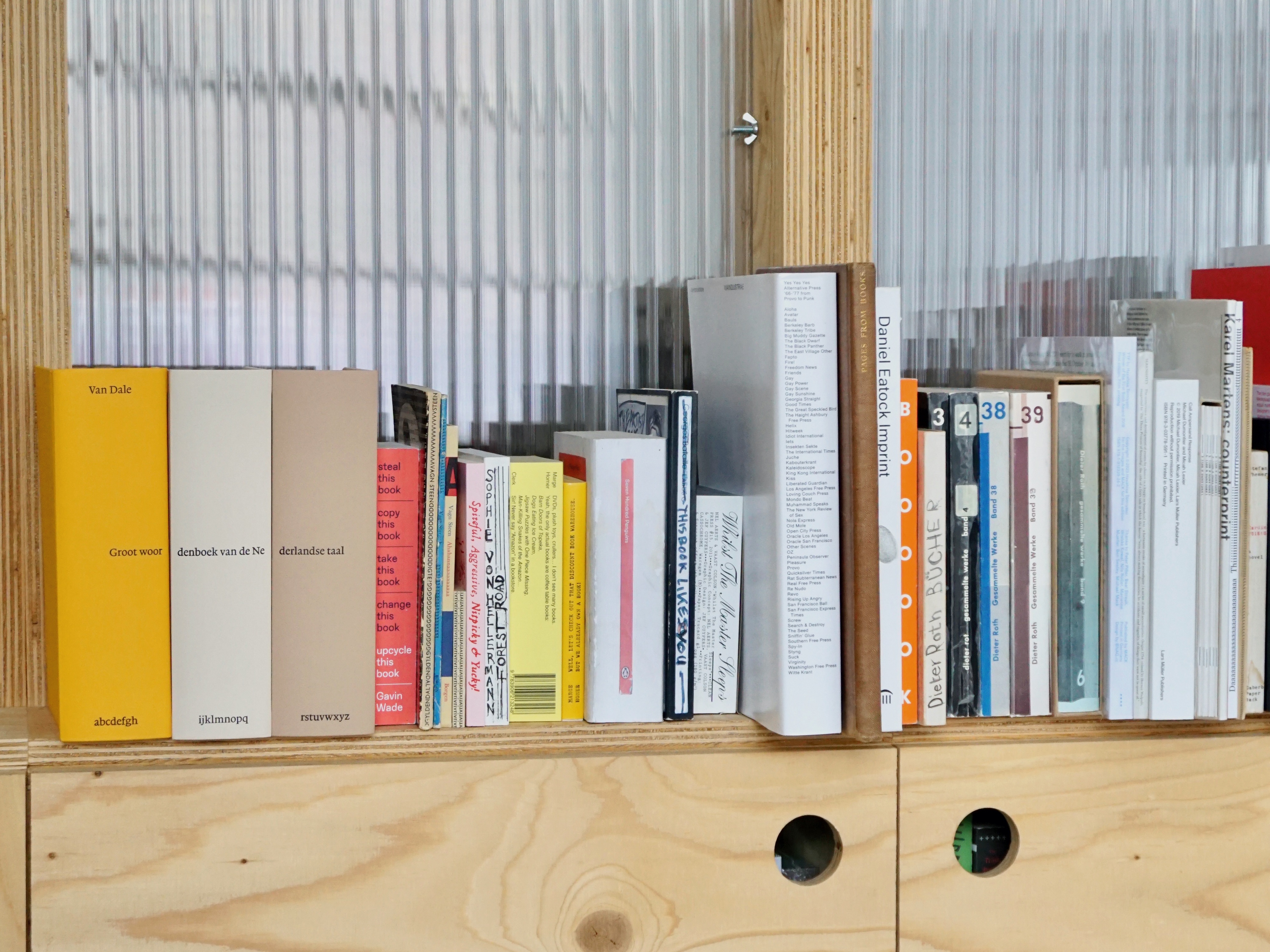
The display hints at international tensions when the spine text has to run vertically: English-language spines generally read top to bottom, European spines usually read bottom to top. There are big books where the spine is so wide that text can be arranged horizontally (step forward the three-volume Dikke Van Dale dictionary designed by Joost Grootens in 2022) and the thin volumes that won’t let a narrow spine restrict them.
For Dot Dot Dot magazine issue 9 (Stuart Bailey and Peter Biľak, 2004) the designers found enough space on their 7mm wide spine to print the production accounts (see top shelf image, centre right).
Don’t let having a thin spine hold you back. Why should thick books have all the fun? Photo: Ira Yonemura.
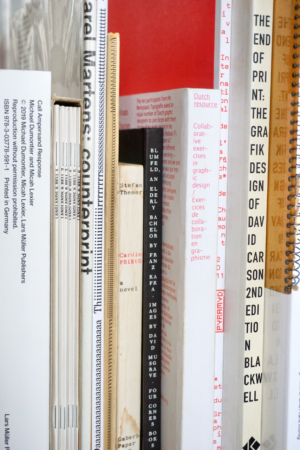
‘Spinorama’ also reflects upon the ageing of books, with spines whose continued exposure to sunlight has bleached the colour and lettering to nothing (design tip: avoid neon colours) and old, worn hardbacks where the spine has fallen off, revealing the random scrap paper the bookbinder has used to hold the book’s sections together. The lining assumed never to be seen is suddenly revealed – like a back-street building when the structure in front is demolished.
‘Spinorama’ catalogue from Fraser Muggeridge’s website.
London Centre for Book Arts, with internal ‘spine’ for the ‘Spinorama’ exhibition. (The same lettering is displayed the right way round on the building’s exterior.) Photo: Aslak Gurholt.
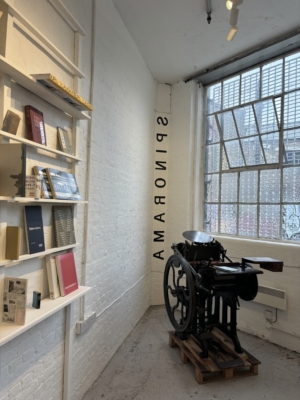
In addition to ‘Spinorama’, the London Centre for Book Arts is always worth a visit. Based in one of the last authentic buildings in Hackney Wick, the Centre has machines and tools and a skilled team you can work with for your binding projects, plus an exceptionally good bookshop focused on the arts of the book and independent publishing.
‘Spinorama’. Curated by Aslak Gurholt & Fraser Muggeridge.
London Centre for Book Arts, Britannia Works, 56 Dace Rd., London E3 2NQ.
Exhibition open from 5 July to 17 August 2024, Tue-Sat, 10am-6pm. Admission free.
Simon Esterson, art director, Eye, London
Eye is the world’s most beautiful and collectable graphic design journal, published for professional designers, students and anyone interested in critical, informed writing about graphic design and visual culture. It is available from all good design bookshops and online at the Eye shop, where you can buy subscriptions and single issues.

